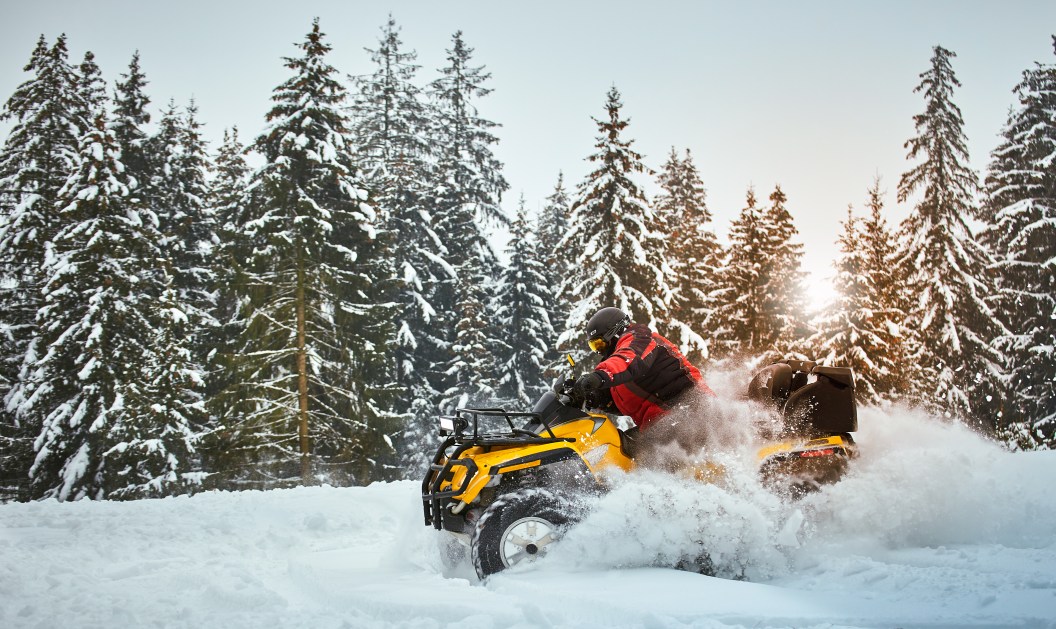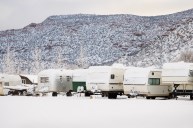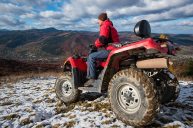Cold weather can have significant impacts on your hunting gear. You must take precautions to protect your investment and guard against potential damage or malfunction, especially when you're relying on these items mid-hunt. If that includes an all-terrain vehicle, you already know that proper maintenance and safeguarding are essential to winterize your ATV for hunting in the cold.
A hunter's ATV can be a lifeline when hunting deep in the wilderness. By following the advice in this guide, you'll ensure that your wheels are ready to roll no matter the weather or outside temperature.
How to Inspect and Maintain Your ATV Year-Round
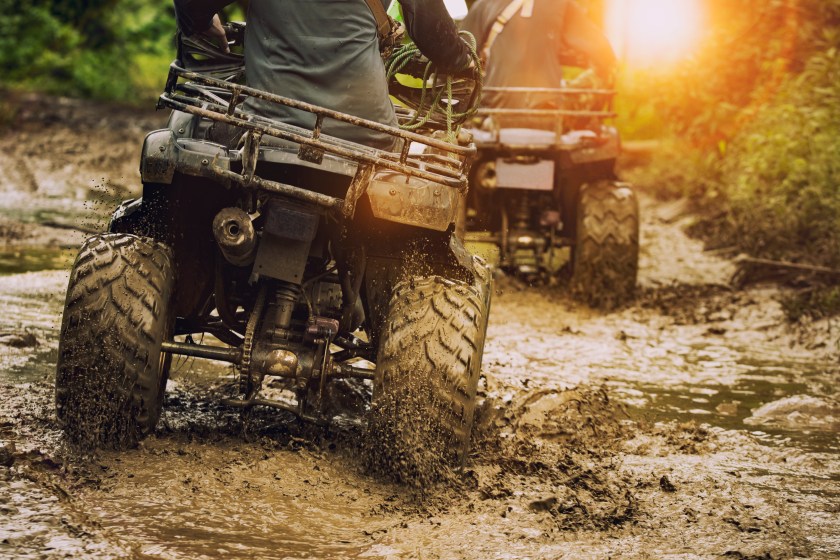
Getty Images, suriya silsaksom
Before you begin winterizing your ATV, you should first complete a thorough inspection of your vehicle. Failure to do this may result in a major engine component going bad at a time when it's going to be very tough to get a repair. Many hunters have learned the hard way that winterizing an ATV starts long before the hunting season begins, with proper regular maintenance—and anyone who's needed to have an ATV towed or pushed back many miles on a trail can attest to this.
It's crucial to ensure that your ATV is in top-notch condition before the hunting season kicks off. When doing your early-season maintenance and inspection for your hunting ATV, some regular points to keep in mind include oil changes and checking the battery, tires, brakes, coolant, and gas.
1. Top off the Oil
One of the main concerns you should have is to keep the oil at an optimal level in your hunting ATV. You can help protect your engine for winter use by switching to a winter-grade oil that will provide better protection and smoother running in frigid weather.
Be sure to check the manufacturer's recommendations for your specific ATV model before putting any kind of oil into it.
2. Inspect Your Battery
The battery is one of the main ATV components that can fail in cold weather, especially if you aren't using it during the spring and summer. Cold temperatures can have quite an impact on battery performance. You can winterize your ATV for hunting season by inspecting your battery for signs of corrosion. After doing this, make sure your battery is fully charged and that it cranks.
Another measure you may want to consider is using a battery tender to keep your ATV battery working in optimal condition after long periods of inactivity. The last thing any hunter wants is to have a big-game animal ready to harvest and the ATV battery won't turn over the engine.
3. Replace Worn Tires
Inspecting your ATV tires is one of the more overlooked aspects of pre-winter preparation. Even if you have recently installed new tires on your ATV, be sure to examine the rubber—sidewalls, too—for wear and tear, as well as the wheels for any loose bolts or any other components that need attention.
If you hunt somewhere that receives heavy snowfall or where temps are often below freezing, you may think about replacing old or all-season tires with snow tires or adding tire chains for improved traction in snowy and icy conditions.
4. Test the Brakes
It goes without saying that your ATV's brakes are extremely important and should never be overlooked when it comes to winterizing your ATV for hunting season. Especially if the ATV has been sitting, take it out on a long test drive to ensure that the brakes are working properly.
Cold weather can affect brake fluid as well, so make sure to check fluid levels and top up if necessary before every hunt.
5. Top off the Coolant
Engine coolant is another more-overlooked part of ATV winterization. Make sure that your ATV's coolant is at an optimal level and that the formula you use can withstand temperatures at or below freezing. It never hurts to go the extra mile and use antifreeze that's designed specifically for winter conditions.
6. Refresh the Gas
It's never a good idea to leave gas sitting in your ATV—or any vehicle or gas-powered, motorized device—for long periods. If you find old gas in the tank when you're getting ready to winterize your ATV, flush it out completely and refill it with new gas before your hunting trip.
Before storing your ATV for the off-season, you should put a bottle of fuel stabilizer/conditioner into an empty gas tank. After applying this, fill the gas tank as full as possible before putting the cap back on, then drive your ATV for a few minutes to ensure that the conditioner mixes properly with the gas in the tank.
A good-quality conditioner can help prevent your fuel from gelling up in frigid conditions, as well as keep the carburetor and fuel injectors coated with anti-corrosive material for winter use. Before finishing this part, make sure you have the fuel valve turned off until you're ready to ride.
What Winterizing Accessories to Add
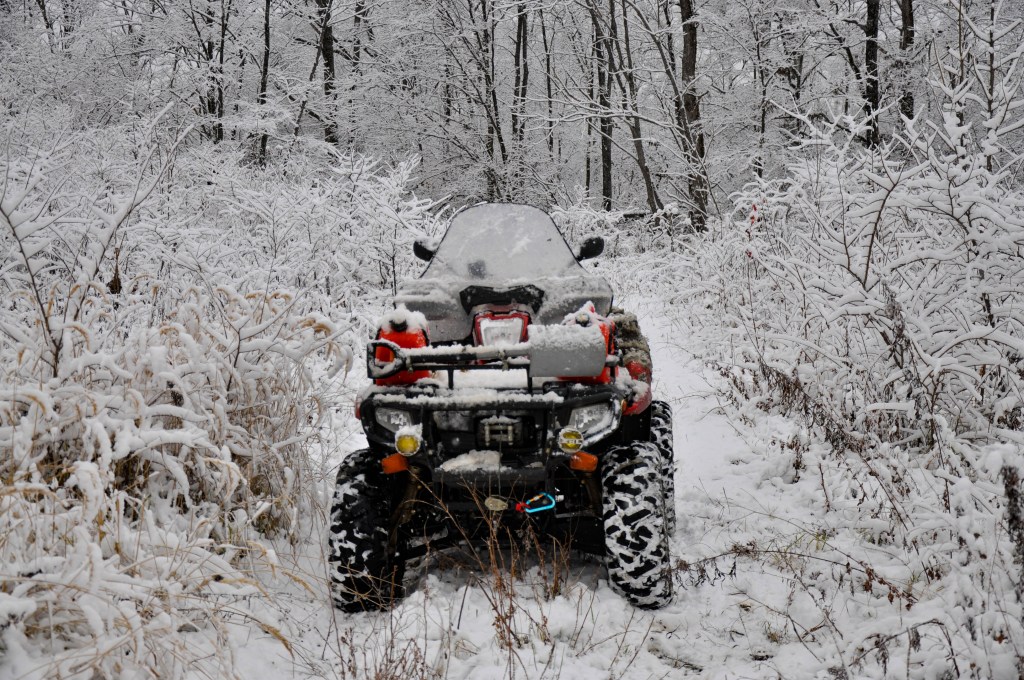
Getty Images, Vladimir Chebanov
Riding your ATV during cold weather feels a lot different and can present some potential risks that you may not encounter during warm weather. The following after-market ATV accessories and gear can help protect you and make your ride more comfortable.
1. Windshields and Handguards
Having a windshield on your ATV goes a long way to make it more comfortable to operate during icy-cold weather. A windshield will prevent the cold air from hitting your face and eyes, and allow you to move along without having to wear face protection.
Handguards are also a very welcome addition to an ATV and will allow you to hold onto the handlebars without the cold air pummeling your hands. These items might seem like unnecessary additions, but they certainly add to the overall comfort of your ride, especially when traveling long distances in winter.
2. Heated Grips and Seat
To really up your comfort level, consider adding heated grips and seat. These components might cost a little more but could be worth it for avid winter hunters. A heated seat in particular goes a long way to make a cold winter ride much more bearable.
3. Emergency Supplies
Having an emergency supply kit is crucial on any winter hunt, including a first aid kit, flashlight, extra layers of clothing, and non-perishable snacks. You should also have a few basic tools stashed away on your ATV if you need to fix anything on it. You may also consider a satellite phone or two-way messenger and/or a GPS tracking device if you or someone in your party gets lost or injured way out in the wilderness.
How to Optimize Your ATV Performance for Winter
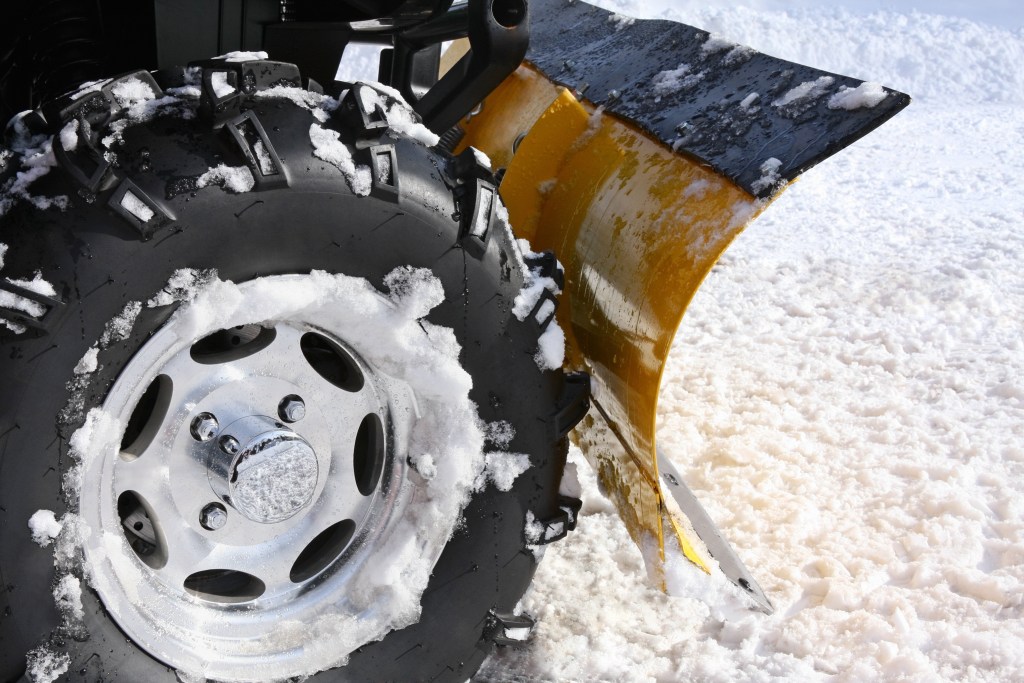
Getty Images, skhoward
Riding your ATV in winter involves meeting a variety of weather-related challenges that include snow, ice, and frigid temperatures. Follow these tips for some of the things you can do to ensure your ATV's performance is at an optimal level:
1. Adjust Tire Pressure
Running your ATV on normal tire pressure can sometimes lead to more slipping and sliding on snow and ice. Letting a small amount of air out of your tires may seem like a bad idea to beginners, but it can improve traction on snow and soft terrain. Be sure to refer to your ATV's owner manual for recommended tire pressure adjustments.
2. Add a Snow Plow or Blade
If you're hunting in northern climates where heavy snow is a common occurrence, investing in a snow plow or blade might be a good idea. Many ATV models have components that make it easy to install one on the front.
Having a tool like this in your gear arsenal goes a long way to help clear deep snow that might otherwise prevent you from reaching your favorite hunting spot.
3. Check and Adjust Suspension
When it comes to driving your ATV in snowy conditions, it's always important to check and adjust the suspension to a softer setting. This helps it get better performance in uneven, snow-covered terrain. As with any tinkering, before doing this, consult your ATV's manual on suspension adjustments.
